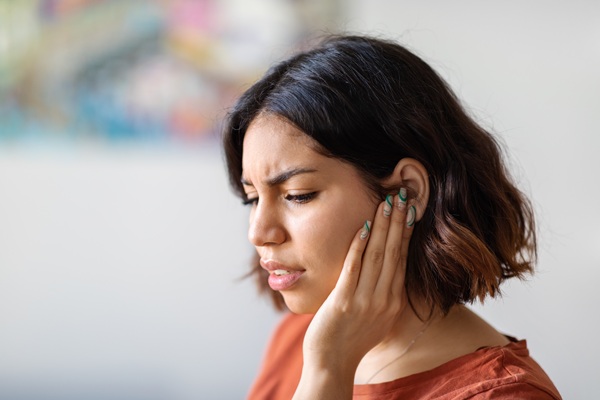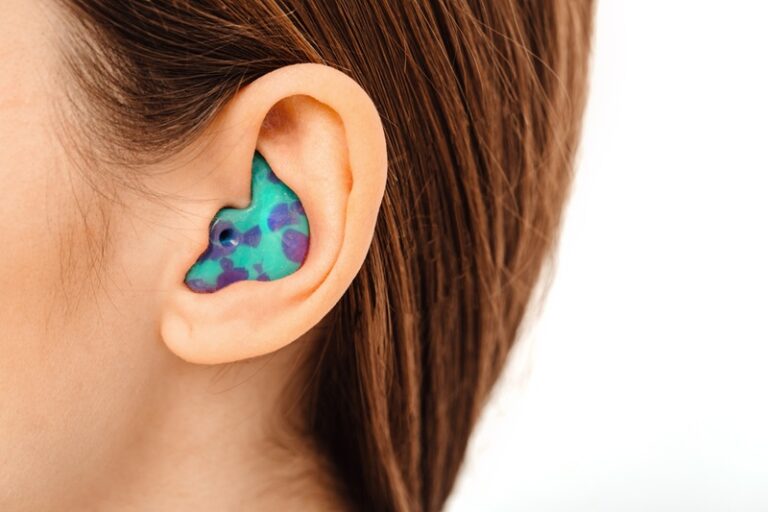When we deal with patients who have hearing loss, some of the most common struggles that they experience are their abilities to connect with others, enjoy conversations, or follow everyday sounds like traffic, the TV, or even a doorbell. Thankfully, we now have many options to choose as our hearing devices, which can help improve the way you hear and live.
In this article, let’s take a look at each of these different hearing devices types available today, what makes them different, and how to choose the one that fits your needs best. At Audience Hearing, we aim to help you understand the various types of hearing devices available so you can make an informed decision.
What Are Hearing Devices?
Hearing devices are small electronic tools that help people hear better. Some are worn inside the ear, while others sit behind it. They work by picking up sounds, making them louder, and sending them into your ears.
While these devices do not fix hearing loss in any way, they still make it easier to hear speech, music, and the sounds around you. And with the right device, it can help improve your confidence, safety, and overall quality of life.
Why People Use Hearing Devices
People may use hearing aid devices for different reasons, including:
- Age-related hearing loss
- Noise damage (from work, concerts, or loud tools)
- Medical conditions or injuries
- Trouble hearing conversations, especially in groups or noisy places
No matter the reason, hearing devices can help reduce frustration and keep you connected to your world.
Common Hearing Devices Types
There are several different hearing devices types, and each is made to fit different ears, hearing levels, and lifestyles. Let’s look at the most common ones available today.
1. Behind-the-Ear (BTE) Hearing Aids
BTE hearing aids are the most traditional type of hearing aids. They sit comfortably behind the ear and connect to a mould or dome that fits inside the ear canal. Sound travels through a thin tube into the ear, while the amplifier, microphone, and battery is all housed in the casing behind your ear.
Features:
- Suitable for all levels of hearing loss, from mild to profound
- Durable and long-lasting, making them great for active users
- Easier to clean and maintain, thanks to their larger size
- Can include advanced features, like directional microphones, Bluetooth, and telecoil
- Rechargeable options are now widely available
These are among the best hearing aid devices for people who want strong performance, reliability, and ease of use, especially those with dexterity issues or more severe hearing loss.
2. Receiver-in-Canal (RIC) Hearing Aids
RIC hearing aids also sit behind the ear, but the speaker (receiver) is placed inside the ear canal and connected to the main unit by a thin wire. This design provides more natural sound and a smaller, sleeker look.
Features:
- Great for mild to severe hearing loss
- Lightweight and less visible than traditional BTEs
- Flexible fit with different dome sizes
- Less “plugged up” feeling, which makes your own voice sound more natural
- Bluetooth connectivity is common, allowing easy connection to phones and TVs
RICs are a great option for adults who want comfort, discretion, and modern features in one device.
3. In-the-Ear (ITE) Hearing Aids
ITE hearing aids are custom-made to fit the outer portion of your ear (called the concha). All components are built into a single casing that fills part of the ear opening.
Features:
- One-piece design makes them easy to insert and remove
- Bigger size allows for larger batteries and powerful features
- Ideal for people with limited hand movement or vision
- Can be made in skin-tone colours to blend in better
- Good for mild to severe hearing loss
ITE devices offer a good balance between performance and convenience, especially if you’re not comfortable with something sitting behind your ear.
4. In-the-Canal (ITC) and Completely-in-Canal (CIC) Aids
ITC and CIC devices fit inside your ear canal. ITC aids fill part of the canal, while CIC aids go deeper and are almost completely hidden. Both are custom-moulded to fit your ears like a glove.
Features:
- Discreet and barely noticeable in most ears
- More natural sound because of their location in the ear
- Easier to use with glasses or hats
- Good choice for people who want something less visible
What to consider:
- Smaller size means shorter battery life
- Limited space for advanced features like Bluetooth or directional microphones
- May not be suitable for people with severe hearing loss or dexterity challenges
These are ideal if you want something low-profile and are comfortable managing a smaller device.
5. Invisible-in-Canal (IIC) Hearing Aids
IIC hearing aids are the smallest hearing aid devices available. They fit deep inside the ear canal, making them completely hidden from view. Choosing IIC requires making a custom-build to fit your ear precisely.
Features:
- Invisible design makes them the most discreet option
- Excellent sound direction due to natural positioning
- Preserves outer ear function, which helps with sound localisation
- Ideal for those with cosmetic concerns or a desire for privacy
What to consider:
- Not ideal for people with moderate to severe hearing loss
- Harder to remove and adjust, especially for older adults
- May not be recommended if you have narrow ear canals, frequent earwax, or middle-ear issues
IICs are often chosen by those who want help hearing but don’t want others to notice they are wearing a device.
Choosing the Right Hearing Device for You
With so many options available, it can be overwhelming to choose the right one for you. Here are a few things to consider before making the choice:
- Your level &Type of hearing loss: Mild, moderate, or severe?
- Your ear shape: Some devices work better with certain ears.
- Your lifestyle: Do you work in noisy places? Talk on the phone often? Enjoy music or movies?
- Your comfort: Do you want something easy to handle, or very discreet?
- Your budget: Features and styles can affect the price.
While asking yourself these questions may help, it’s still best to speak to a hearing care professional who can guide you through your choices, do a proper hearing test, and fit the right device for you.
Hearing Better Starts with the Right Device
If you struggle with hearing loss, there are more options now to choose from. With the right hearing aid devices, you can enjoy clearer conversations, greater confidence, and better quality of life.
Learn more about each one with the help of our expert audiologists at Audience Hearing. We are here to offer quality hearing assessments and services, and support you in choosing the right hearing device type.
Schedule a consultation with us to hear better.



